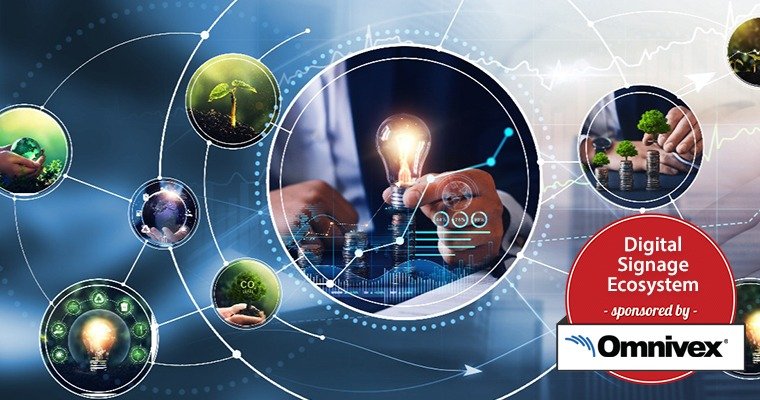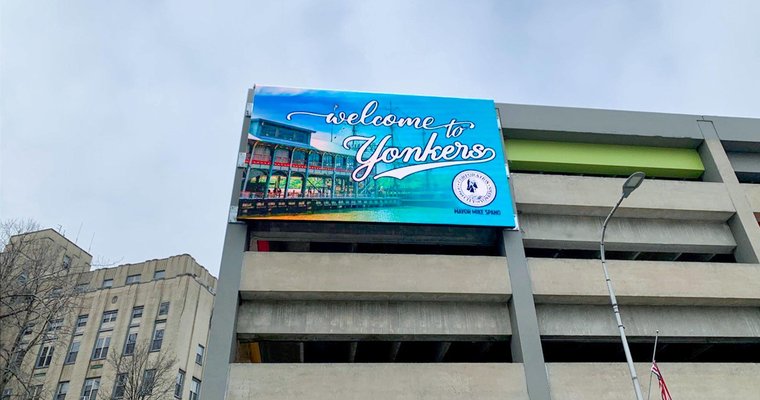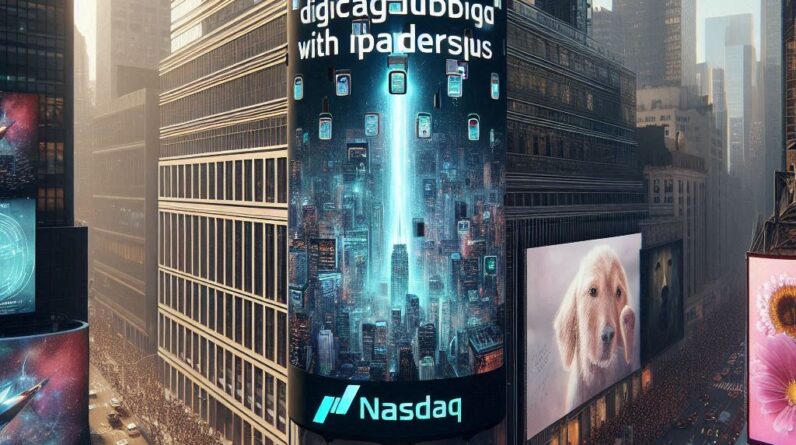
[ad_1]
Industry experts share insights for the seven top strategies to build your digital signage ecosystem for success, whatever your project.
It’s been said that “no man is an island,” and the power of community and collaboration is nowhere more apparent than in the digital signage industry.
Industry leaders from software, hardware, and integrator specializations sat down via video link with editor Daniel Brown to discuss leading strategies to build an ecosystem for lasting success, for projects and businesses of all sizes.
Start by picking your lane
In an increasingly crowded industry with ever more intense specializations, it pays to know what you’re good at and to focus on that skill; knowing when to call in experts is one of the most important skills you can have to succeed in the digital signage space, whether you’re in hardware, software, integration or another specialty. By being the best at your niche, you can then invite partners to collaborate on what is outside your specialization.
“What we’ve done here at Omnivex is make a strategic decision to stay in the software lane,” Damilare “Dami” Adeola, sales director at Omnivex, said when interviewed via video link alongside Chris Devlin, CEO at Omnivex. “In the industry, you’ll see that a lot of players have gone on to become integrators themselves, or to supply hardware, or to provide additional services around art and design. And so I think there’s a quest for an expanding portion of the pie, but what you find is that folks are then delivering maybe not subpar projects, but projects that underwhelmed the client. And instead, we think a better approach to take is for everyone to really hone in on what you can be really, really good at and find a way to work together. And that starts right from the ideation of a project.”
 The notion of the “ecosystem” of digital signage is becoming ever more common in conversations about project design, and it’s common to see clients come to various players (even sizeable ones) with a project that they have no idea how to accomplish; by being willing to point that customer to the entity best suited for components of their project (or, in some cases, the entire project), you not only ensure a better outcome for that client in that specific project, but you elevate the entire industry. It’s a practice that’s becoming more common, and experts told Digital Signage Today that making it even more mainstream is one of the best ways to enhance the industry as a whole.
The notion of the “ecosystem” of digital signage is becoming ever more common in conversations about project design, and it’s common to see clients come to various players (even sizeable ones) with a project that they have no idea how to accomplish; by being willing to point that customer to the entity best suited for components of their project (or, in some cases, the entire project), you not only ensure a better outcome for that client in that specific project, but you elevate the entire industry. It’s a practice that’s becoming more common, and experts told Digital Signage Today that making it even more mainstream is one of the best ways to enhance the industry as a whole.
It might seem strange to those unfamiliar with the quirks of the industry, but Adeola said he is obsessively focused on meeting needs and solving problems, not just on making individual sales. He said making a sale for a project that you aren’t equipped to knock out of the park is a recipe for unhappy customers, poor long-term results, and harm for the industry as a whole. He believes hat sort of short-term, quarterly-sales mindset is starting to fade as people embrace what Adeola calls “the long tale” of opportunity.
“Our job, I’d say for our sales team at Omnivex, is to be able to identify where we think the customer needs to start and know the three or four best people in the world for helping the customer achieve that thing, and for us to have good relationships with those people, and then to be able to bring all of these parties together in a way that makes sense for the customer and in a way that makes sense for all of us to be successful.”
“This is true partnership,” Devlin added. “It’s based on value. It’s more like an ecosystem; most of our partners don’t compete with us. We have different skill sets, and it’s the blend of those skills — because ultimately, the customer, the end user, it doesn’t matter who it is… they’ll have a certain skill set themselves.
“So, then your partner ecosystem comes from the different skillsets you blend,” Devlin said. “I think we’re really talking about partnering, the blending of strengths, to deliver customer value.”
Value-based partnerships
Adeola and Devlin emphasized that whether you’re a digital signage provider or a customer with a project, you need to focus on value-added and value-based partnering. This means that you need to build relationships across the industry; this can mean nominal competitors collaborate on specific projects, though that’s not always the case, and Adeola said his team likes to see themselves as breaking down barriers on behalf of customers.
Misty Chalk, VP of Sales, Americas at BrightSign LLC, joined Digital Signage Today via video link to discuss the ecosystem phenomenon.
“The interesting thing about signage, and you used the word ‘coopetition’ earlier, which as you know, we’re all frenemies. We’re all competitors, yet we’re partners, but it is kind of a sense of this community, where we understand the ecosystem. The ecosystem is so incredibly important, especially to BrightSign — it’s how we built our business. With our players you’re allowed to use many different software choices, and everything we do is about making sure that we’re supporting our ecosystem and that we have plug and play devices with other people’s hardware and technology.
“So, there’s a couple of different routes that you can take, and I think that one of them is having a consultant to help you within the digital signage space that knows all these different partners,” Chalk said. “I also think that if you have a partner that you’ve been using that you trust, lean on them.” Similar to Devlin and Adeola, Chalk emphasized the power of long term thinking, planning not just for meeting today’s needs, but tomorrow’s as well: “It’s our job to guide them [customers] based not just on what they want to do right now, but what do they want to do in the future? Because if you choose the right system, it should grow with you.”
It’s a theme well known to integrators, according to Doug Freutel, VP and Visionary at Radiant Technology Group Inc., a digital signage integration specialist. Freutel joined Digital Signage Today via video link to share practical advice on building a digital signage ecosystem, sharing that he is currently seeing the industry’s ecosystem mindset up close.
“What’s interesting is, we’re working on an RFP right now that unfortunately I can’t provide you with a lot of details on, but we’re actually strategically partnering with another AV integrator that, traditionally, we would look at as competitors,” Freutel said. “But you know what? They’re really well known for large video wall experience integrations, kind of very architectural and art installations of digital signage.”
Echoing other experts, Freutel said it’s vital to keep an eye on the trends in the industry, including procedures, standards, and regulations for the type of project you’re planning. It’s not enough to think about the end user experience; you need to consider hardware, networking, security, and similar underlying components that make for a lasting, successful project. “Thinking about what actually makes up the entire ecosystem is going to be very important, because again, most people aren’t really thinking about that whole perspective.”
The rules for building a strong ecosystem for success are also useful for customers trying to plan a project; try to find a provider or vendor who is willing to help you harness an ecosystem, and be wary of vendors who won’t take the time to study your project in depth or who seem to overpromise to do everything singlehandedly; if you find a vendor who follows these rules, you will be in a much stronger position to fulfill your project!
7 rules for strong ecosystems
- Live in the real world. Study success and replicate it.
- Create relationships and do research.Get out there and see who is doing great work; visit the airport, go to trade shows, talk to happy customers and keep your finger on the pulse of the industry, which is evolving constantly.
- Start every partnership by asking, “how can we add value together?” Each relationship must be built on trust.
- Know the top 4-5 great security providers. Devlin and Adeola spoke highly of Everbridge, as an example.
- Be proactive. Actively study how to make your customers’ lives easier and solve their problems. (This plays into #2, know the trends).
- Know your lane. Define your lane and stay in it. Be the best at X, and build your ecosystem to support that greatness.
- Don’t try to do it all. Avoid this common mistake among vendors by being laser focused on what you’re good at.
Daniel Brown is the editor of Digital Signage Today, a contributing editor for Automation & Self-Service, and an accomplished writer and multimedia content producer with extensive experience covering technology and business. His work has appeared in a range of business and technology publications, including interviews with eminent business leaders, inventors and technologists. He has written extensively on AI and the integration of technology and business strategy with empathy and the human touch. Brown is the author of two novels and a podcaster. His previous experience includes IT work at an Ivy League research institution, education and business consulting, and retail sales and management.
[ad_2]
Source link






